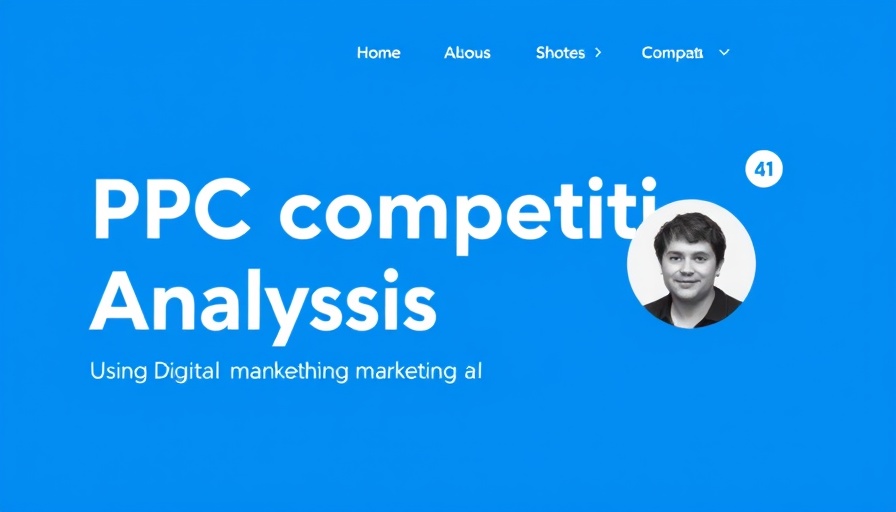
Unlocking the Secrets to PPC Success with AI
Pay-Per-Click (PPC) advertising is a fierce field, and a competitive analysis could mean the difference between the brands that shine and those that flicker dimly in obscurity. As marketers, we’re always aiming for that sweet spot where our ad spend generates maximum returns. Enter the revolutionary tools powered by artificial intelligence (AI). While traditional methods of research can be tedious and time-consuming, harnessing AI—particularly large language models (LLMs) like ChatGPT—can transform how we approach and execute competitive PPC analysis.
Streamlined Approaches to Competitor Analysis
Imagine having a team of analytical masterminds at your disposal, effortlessly identifying competitors' strategies and highlighting areas for improvement in your own advertising campaigns. With the right prompts and data at your fingertips, LLMs can sift through vast amounts of online information to uncover which keywords are golden for your rivals. By leveraging platforms like Ahrefs, which offer deep insights into what your competitors are bidding on, you can easily gather actionable insights that can shape your PPC campaigns.
The Step-by-Step AI-Powered Competitive Analysis
1. Identify Your Competitors: The first step is creating a comprehensive list of your competitors. You can verify competitors using tools like the Organic competitors report in Site Audit, ensuring you’re not overlooking any potential threats.
2. Gather Critical Data: Once you have your competitors' domains, input them into tools like Ahrefs for Batch Analysis. This gives you insights into their keyword strategies and ad copy.
3. Spot Trends with AI: After compiling your data, human insight prevails. Manually analyzing spending patterns and strategies can often yield deeper understanding than algorithms alone. For instance, you might uncover spending spikes that indicate heightened competition.
4. Leverage ChatGPT for Recommendations: Once you've mapped out your competitors' strategies, bring in ChatGPT to analyze the data. This AI can reveal the keyword gaps—those lucrative terms your competitors bid on that you currently neglect. It can even assemble a comprehensive PPC action plan tailored to your unique needs!
The Benefits Beyond Just Numbers
While digging into competitors' ad spends and keywords paints part of the picture, it’s also essential to understand the emotional resonance of the ads themselves. Take note of the creativity within the ad copy and landing pages. What tone do they set? How might your audience respond? A copy that connects emotionally often trumps one that merely presents facts.
Future Predictions: How AI Will Shape PPC Analysis
The trajectory of PPC strategies influenced by AI is only beginning. As algorithms learn and evolve, the ability to interpret complex patterns and deliver recommendations in real time will improve dramatically. Marketers who adopt AI tools now will not only streamline their analysis but will also set themselves up for innovative approaches as these technologies advance.
Counterarguments Worth Considering
However, as with any technology, blind reliance on AI can lead to pitfalls. An over-reliance without human judgment can yield data-driven inaccuracies. Therefore, while AI is a powerful ally, it shouldn't replace human creativity and insight. Striking the right balance between the two can unlock unprecedented growth opportunities for businesses.
Your Next Steps: Effective Implementation
The barriers to conducting effective PPC competitive analysis are significantly lowered with AI. By integrating platforms like Ahrefs with LLMs, marketers find themselves equipped with the tools necessary for success. As a business leader or marketer, now is the time to explore these technologies. Don’t just keep your competitive edge—enhance it.
Ready to dive deeper into the potential of AI in your marketing strategies? Finding new ways to optimize your PPC campaigns can be a game-changer, both for short-term wins and long-term growth.
 Add Row
Add Row  Add
Add 




Write A Comment